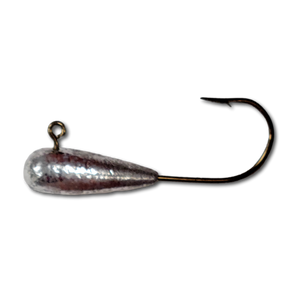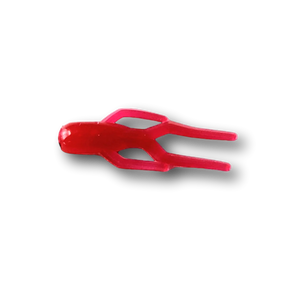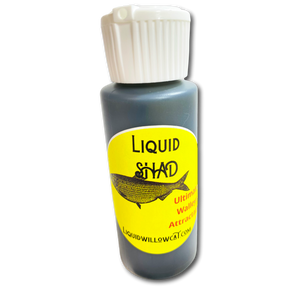Panfish might be small, but their appeal is enormous. The term "panfish" refers to a wide variety of freshwater fish that are typically small enough to fit in a frying pan—hence the name. These include species like bluegill, sunfish, perch, and, of course, the fan-favorite crappie. Each species offers a unique fishing experience, whether you’re fishing for fun, food, or relaxation.
Crappie, often split into black crappie and white crappie, are a particular focus for many anglers. Black crappie prefer clear water with more vegetation, while white crappie thrive in murkier water and can often be found suspended in deeper areas. Both are schooling fish, meaning when you catch one, there’s usually more nearby. Bluegill and sunfish, on the other hand, are easy to find in shallow waters, making them perfect for bank fishing with kids or beginners. Yellow perch round out the panfish lineup, offering a tasty reward and strong, consistent action in northern lakes and rivers.
Fishing for panfish and crappie doesn’t require complicated rigs or expensive gear, but knowing what to use will help you catch more fish. Live bait like worms, minnows, and crickets are classic choices for all types of panfish, while artificial lures like jigs, small soft plastics, and spinners can often produce just as well.
For crappie, the go-to rig is the jig-and-minnow combination. Lightweight jigs, often in the 1/16 to 1/32 ounce range, paired with small curly-tail grubs or tube baits work wonders. Bright colors like chartreuse, white, and pink are proven crappie magnets, especially in stained water. Jigging vertically over brush piles, docks, or submerged structure is one of the most effective presentations, but crappie can also be caught using slip floats and live minnows. During spring, shallow areas near shorelines are prime spots as crappie move in to spawn.
For bluegill and sunfish, simplicity is key. A small hook tipped with a worm, cricket, or piece of bread under a bobber is all you need. Fly anglers often use small popping bugs or nymphs to mimic surface insects. Target shallow areas near vegetation, docks, or brush where these fish congregate. Bluegill bite best in warm weather, particularly in late spring and summer.
For yellow perch, live minnows on small hooks or small jigging spoons are highly effective, especially in colder water. Perch tend to stick to deeper water in summer but move shallower in spring and fall, making them easier to target during these seasons.
Panfish and crappie are available year-round, but their behavior changes with the seasons.
- Spring is prime time for crappie fishing. As water temperatures rise, crappie move into the shallows to spawn. Look for them near brush piles, downed trees, and shallow coves. Bluegill and sunfish also spawn in spring, building nests in shallow, sandy areas close to shore.
- Summer brings warmer water, pushing crappie and perch deeper. Bluegill and sunfish remain shallow but prefer shaded areas like docks, lily pads, and grass beds. Slip bobbers or jigging deeper water near structure works well for crappie and perch during this time.
- Fall sees panfish feeding heavily as they fatten up for winter. Crappie schools become more predictable, often suspending in deeper water near ledges or creek channels. Use small jigs or live bait to target them.
- Winter is underrated for crappie and perch fishing. Ice anglers in northern states enjoy excellent fishing using small jigs tipped with waxworms or minnows. If you’re fishing open water, crappie can be found in deep holes where the water stays consistent in temperature.
Geographically, panfish and crappie are widespread throughout the U.S. Crappie fishing is legendary in southern lakes like Grenada Lake in Mississippi and Lake Fork in Texas, while northern states like Minnesota, Wisconsin, and Michigan are famous for perch and bluegill fishing. Wherever you are, look for shallow coves in spring, deeper brush piles in summer, and submerged structure year-round to locate these fish.
Are Panfish and Crappie Good to Eat?
Absolutely! Crappie, bluegill, and perch are some of the best-tasting fish you can catch. Their mild, flaky white meat is perfect for frying, grilling, or baking. Here’s a simple recipe for a classic fish fry:
Crispy Panfish Fillets
- Ingredients:
- 1 pound crappie or bluegill fillets
- 1 cup cornmeal
- 1/2 cup flour
- 1 teaspoon garlic powder
- Salt and pepper to taste
- Oil for frying (vegetable or peanut oil)
- Directions:
- Heat 1 inch of oil in a skillet to 350°F.
- Mix cornmeal, flour, garlic powder, salt, and pepper in a bowl.
- Dredge the fillets in the mixture, coating evenly.
- Fry for 2-3 minutes per side until golden brown.
- Drain on paper towels and serve with lemon wedges or tartar sauce.
Presentations to Match the Fish
When fishing for panfish and crappie, adapting your presentation to the situation is key. For crappie, vertical jigging with light jigs around structure like brush piles or docks is often the most effective approach. If fish are shallow, casting a jig under a slip float and letting it sit or twitch gently can trigger bites. During summer, try trolling small jigs or minnows along creek channels or ledges where crappie suspend.
For bluegill and sunfish, keep it simple. A worm on a small hook under a bobber is hard to beat, especially when fished near shorelines, grass, or shade. These fish often bite best when the bait is presented naturally and motionless. If you want a little more excitement, small inline spinners or micro crankbaits can draw strikes when bluegill are feeding aggressively.
Perch are best targeted with small jigs or live minnows. Jigging spoons can be deadly in deeper water, especially when perch schools are located using electronics. Slowly lift and drop the bait near the bottom to mimic small forage.
Panfish and crappie fishing is about simplicity, fun, and the satisfaction of a successful day on the water. Whether you’re introducing someone new to fishing or honing your skills with light tackle, these fish offer endless opportunities to learn and enjoy. So grab a rod, pick up a box of worms or your favorite jigs, and get ready to reel in some unforgettable memories.
Qwik Catches!






















































